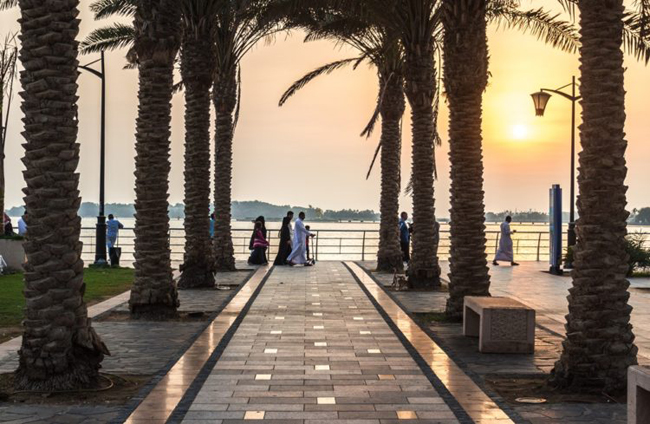
By Neasa MacErlean
Tourism in the Middle East has long been dominated by the high-end resorts in Dubai, Egypt and Jordan yet they could soon have a new challenger in their midst.
Saudi Arabia is turning its attention to tourism and entertainment as it seeks to not only reposition its economy but also meet a pent-up demand for greater leisure options within its own population.
The Saudi government is thinking big. Plans are afoot for a luxury tourist area bigger than Belgium and stretching across 50 islands on the Red Sea coastline, which is mooted to open in 2022.
Another large-scale scheme to develop an area the size of Moscow was unveiled in July. The ‘Al Faisaliyah’ project will create a new city west of Mecca, with residential units, entertainment, an airport and a seaport.
Then there is an Entertainment City — projected to be the country’s largest cultural, sports and entertainment area and due to open its first phase in 2022. Located south-west of Riyadh, the city will include a safari zone and a theme park from the Six Flags Entertainment Corporation.
A vision for the future
“Tourism is a key part of the Saudi government’s Vision 2030 plan,” says JLL senior analyst Ahmed Almihdar. “These projects are designed to appeal to both international and local tourists as the government looks to diversify away from petroleum and treble income from non-oil sources as well as create more local employment opportunities.” This strategy, outlined in the National Transformation Program, will pave the way for a rebalancing of the whole economy and protect it from the volatility of oil prices.
In addition, the construction of these enormous leisure venues will be accompanied by a government drive to double the amount that Saudis spend on recreation — up to 6 per cent of household expenditure by 2030.
And the government has a keen local audience for new entertainment options driven by a young population; some 50 percent of the Kingdom of Saudi Arabia’s 32.6 million residents are under the age of 30.
“There is a lot of local demand for many services — particularly in tourism and entertainment,” says Almihdar. “Entertainment options are now mainly limited to shopping, cafes and children’s arcades.”
The potential for local tourism is also getting a boost in other ways. At present, large numbers of Saudis go abroad during school and public holidays, but some are increasingly finding it harder to afford regular travel. This is due to a range of subsidy cuts and fees which reduced disposable income levels, making it trickier for Saudis to holiday in Dubai, Bahrain, Turkey, Egypt and other popular locations.
A challenging task ahead
Yet despite the appetite for leisure projects, well-known challenges must be overcome if the projects are to get off the ground. “Looking historically, large-scale projects faced substantial delays,” says Almihdar.
However, the government is now taking a different approach, and Almihdar thinks this could be crucial. “The government is pushing for more public private partnerships,” he says. “If they manage to do this, you could see a higher materialization rate looking forward. To make this happen, the legislation needs to be clear, especially if you are trying to attract foreign investors. And many potential investors realize that there is an untapped market for entertainment here.”
Another question mark hangs over the KSA’s restrictive visa policy. Yet there could be some compromise with the Red Sea tourism development, making it possible for the area to have different laws to those in place for the rest of the Kingdom.
Almihdar believes that innovation will start in particular niches of the leisure sector, like the annual Hajj pilgrimage to Mecca, which draws around 1.3 million foreign pilgrims each Hajj season.
“This could be one of the first areas to focus on in tourism plans,” he says. “At present, those who come for the Umrah and Hajj pilgrimages are only allowed to stay for around a month or so. But that could be extended to encourage pilgrims to visit these entertainment and leisure cities. In order to attract international tourists they have to focus on the Red Sea, particularly its diving potential and historical sites, which are popular with European and Western tourists.”
The KSA has the beaches, climate and other natural resources which will create the foundation of an emerging entertainment sector. It now has to build up expertise in providing the commercial and tourism infrastructure which will attract locals and people from abroad, Almihdar believes.
“The first aim is to encourage more residents to stay here for their holidays,” he concludes. “And then the government wants to draw people here from the rest of the world. And when the tourists start coming, investors tend to quickly follow.”


